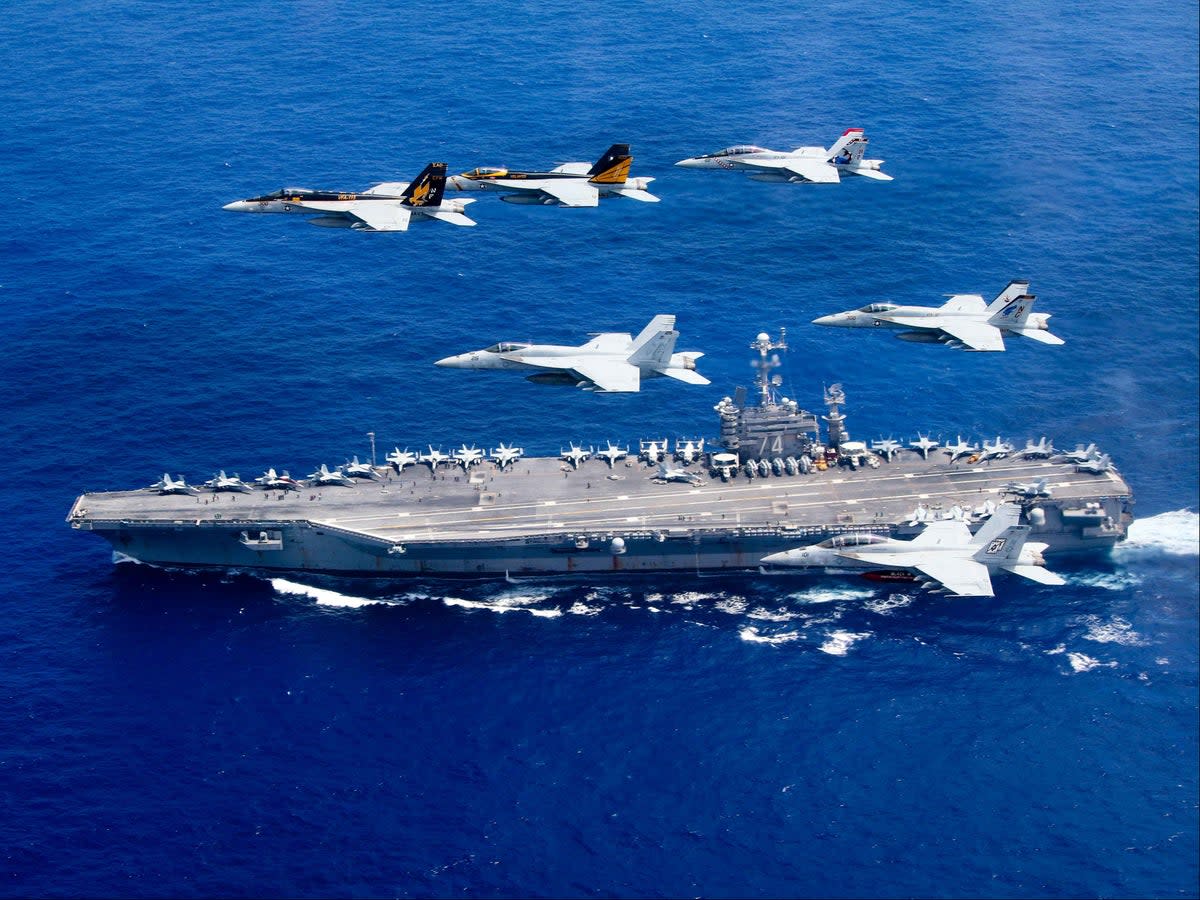North Korea fires two short-range ballistic missiles as US deploys nuclear-powered carrier to Korea Strait

North Korea fired two short-range ballistic missiles just hours before a US nuclear-powered aircraft carrier joined drills with South Korea.
South Korea‘s Joint Chiefs of Staff intercepted two missiles fired from the east of Pyongyang that cruised 370km (229 miles) before landing at sea at about 7.47-8am on Monday.
Japan’s military also confirmed the test launch, but said the missiles took an irregular trajectory and reached a maximum altitude of 50km before landing outside Japan’s exclusive economic zone.
The seventh missile test this month appeared to be timed with the arrival of the nuclear-powered aircraft carrier USS Nimitz and its strike group in waters off the Korean Strait on Monday.
The US warship was deployed in waters south of Jeju Island along with a guided missile cruiser and two destroyers for air defence exercises and other drills with South Korean warships.
The Nimitz strike group was expected to arrive in the South Korean mainland port of Busan on Tuesday.
The visit of the nuclear-powered aircraft carrier “shows the US policy of extended deterrence in action and highlights the alliance’s overwhelming capabilities against North Korea,” South Korean fleet commander vice admiral Kim Myung-soo said in a statement.
Jang Do Young, a South Korean navy spokesperson, said the drills were aimed at sharpening joint operational capabilities and demonstrating the US commitment to defend its ally with a full range of options, including nuclear, in the face of the North’s “escalating nuclear and missile threats”.
Referring to the type of missile used by North Korea, the Japanese defence ministry previously said a North Korean solid-fuel missile has characteristics that resemble Russia’s Iskander mobile ballistic system.
It is designed for manoeuvrability in low-altitude flight to better evade South Korean missile defences.
Japanese chief cabinet secretary Hirokazu Matsuno condemned the new test launch and said North Korea can ramp up testing activity further or even conduct its first nuclear test since 2017.
The South Korean and Japanese militaries also denounced the latest launches as serious provocations threatening regional peace and violating UN Security Council resolutions.
The US Indo-Pacific Command said the launches did not pose an immediate threat to the US or its allies, but still highlighted the “destabilising impact” of North Korea’s illicit nuclear weapons and missile programmes.
In a similar incident in September last year, the US had deployed the USS Ronald Reagan and its battle group arrived for joint drills with South Korea and North Korea had responded by a firing short-range missile.
North Korea fired 20 ballistic and cruise missiles on 11 occasions this year as leader Kim Jong-un has vowed to counter the US-South Korea joint military drills.
On Friday, the North confirmed the three-day-long test of its first nuclear-capable underwater drone that it claimed can set off a huge “radioactive tsunami”.
Pyongyang’s claims, however, were met with scepticism by defence experts but underlined the Kim regime’s commitment to strengthen his country’s military arsenal.


